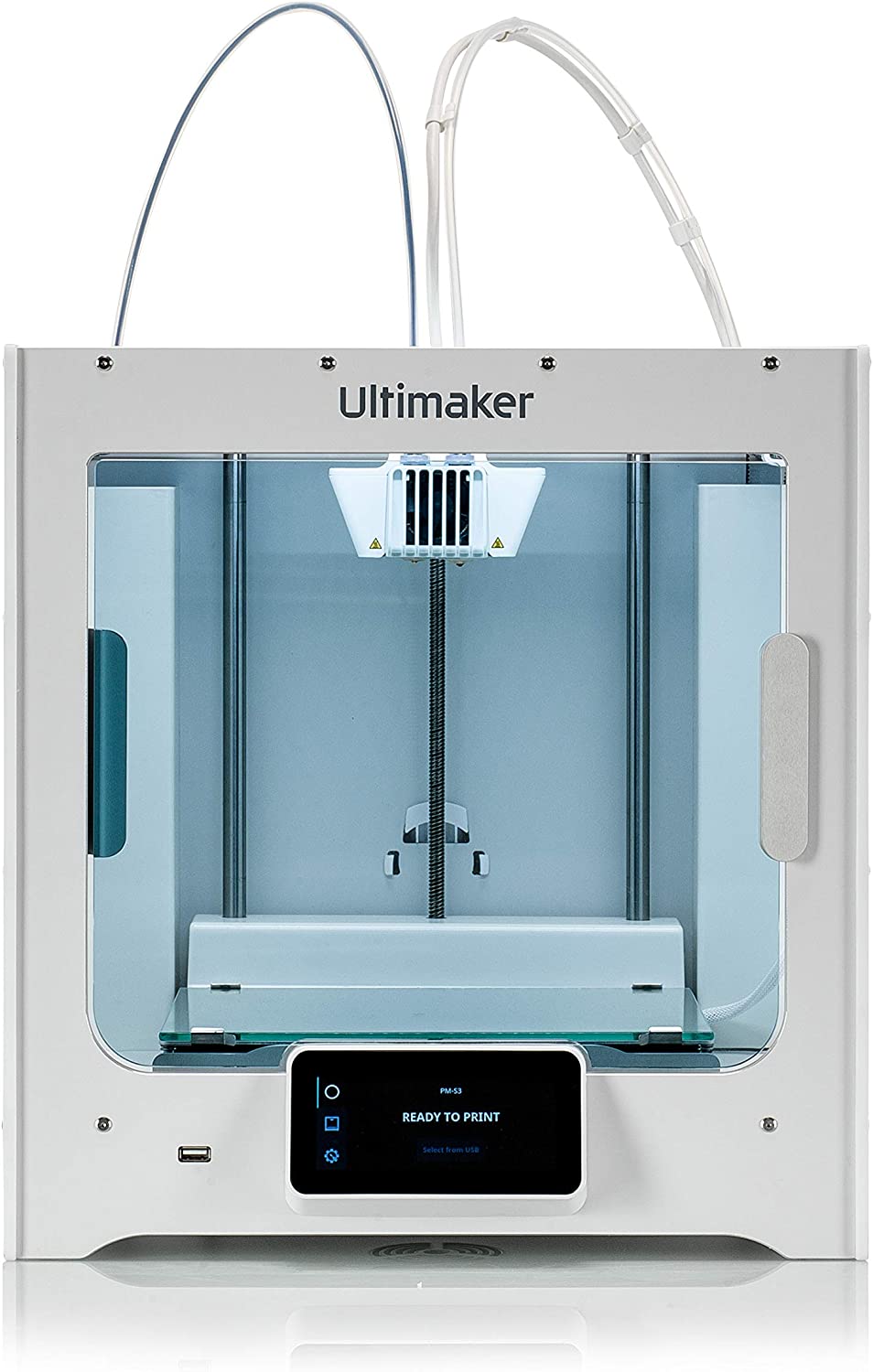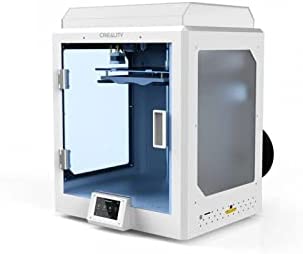Compare S5 vs CR5 PRO H
Comparison between the best 3D printers
Choose the best 3D printer at the best price. The cheapest 3D printers are here.
Buy a 3D printer here with 3D Fila.
 |
 |
|
| Model | S5 |
CR5 PRO H[BUY CR5 PRO H] |
| Printing Material | Filament | Filament |
| Buy Filament for Ultimaker S5 | Buy Filament forCreality 3D CR5 PRO H | |
| Estimated price | $6950,00 | $1300,00 |
| Manufacturer | Ultimaker | Creality 3D |
| Release Year | 2021 | 2022 |
| Print Volume [mm] | 330x340x300 | 300x225x380 |
| Printer Size [mm] | 495x585x780 | 530x487x612 |
| Weight [kg] | 20,6 | 32,5 |
| Power Loss Recovery | YES | YES |
| Enclosed printer | YES | YES |
| Bed Leveling | Automatic | Automatic |
| Filament End Sensor | YES | YES |
| Bed type | Heated | Heated |
| Power supply system | Bowden | Bowden |
| Standard nozzle | 0,4 | 0,4 |
| Maximum Nozzle Temperature [°C] | 280 | 300 |
| Maximum Bed Temperature [°C] | 140 | 100 |
| Maximum printing speed [mm/s] | 80 | 100 |
| Filament holder | YES | YES |
| Camera for supervision | YES | YES |
| Recommended filaments | PLA, ABS, PETG, PC, Nylon, Tritan | PLA, PETG, Tritan, Flex, ABS |
| Recommended slicers | Cura | Cura, Simplify, Slic3r, IdeaMaker |
| Maximum Resolution [mm] | 0,1 | 0,1 |
| Processor | ATMEGA 2560 | |
| Display | Display touchscreen 4,7'' | Display touchscreen 4,3'' |
| Power Supply | 110/220V / 500W | 110/220V / 350W |
| Connectivity | USB / Wi-Fi | SD / USB |
| Operating systems | Windows, Mac, Linux | Windows, Mac, Linux |
| Date of registration in the system | 2022-11-08 | 2022-11-04 |
| Release date | 2021 | 2022 |
| Extra features | The Ultimaker S5 stands out for its easy loading and unloading of materials, automatic bed leveling and excellent print quality with resolutions from 60 to 400 microns. It has dual extruders, interchangeable print cores, advanced connectivity with Wi-Fi and LAN, and intuitive software. It includes a Wi-Fi camera for monitoring, a removable glass bed, and a large build volume, making it ideal for professional and creative environments. | The Creality CR-5 PRO H 3D Printer stands out with a high-temperature nozzle (up to 300°C), a 300 x 225 x 380mm print volume, and a closed chamber for thermal stability. It includes BLTouch auto-leveling, a carbon-crystal silica glass base for easy model grip and removal, a filament sensor, and a resume print function. It has a 4.3-inch touchscreen interface, quiet operation, an attractive design, and is pre-assembled, ideal for technical materials. |
| Support for multiple colors and materials (AMS and CFS) | NO | NO |
Notes * |
||
| Cost-benefit | 2 / 10 | 6 / 10 |
| Hardware | 3.6 / 10 | 3.5 / 10 |
| Tela | . | . |
| Print volume | 4 / 10 | 4 / 10 |
| Performance | 1 / 10 | 1 / 10 |
| [BUY CR5 PRO H] |
Conclusion |
| In comparing the Ultimaker S5 and the Creality CR-5 PRO H, we see two solid contenders in the 3D printing market, each catering to distinct user needs and budgets. The Ultimaker S5, while priced significantly higher, offers advanced features that justify its premium position. It is tailored for professional environments, boasting a larger print volume, exceptional print quality, and dual extruder capabilities that provide versatility in material usage. Its automatic bed leveling, extensive connectivity options, and an intuitive user interface further enhance its appeal for serious 3D printing applications. These qualities make it ideal for high-end projects requiring precision and adaptability. On the other hand, the Creality CR-5 PRO H stands out as a budget-friendly alternative without skimping on essential features. With a slightly smaller print volume and a high-temperature nozzle, it is well-suited for a variety of materials, including flexible filaments. Its automatic leveling and ease of use make it beginner-friendly and accessible for hobbyists and small businesses alike. The design and operational efficiency cater to those looking to invest in a capable 3D printer without the financial commitment of high-end models. In summary, the choice between the two printers hinges on the user's specific needs. If budget allows and advanced features are paramount, the Ultimaker S5 is an exceptional investment. However, for those seeking an effective, cost-efficient solution, the Creality CR-5 PRO H provides robust performance and versatility at a fraction of the price. Ultimately, both printers have their strengths, making them suitable for different segments of the 3D printing market. |

